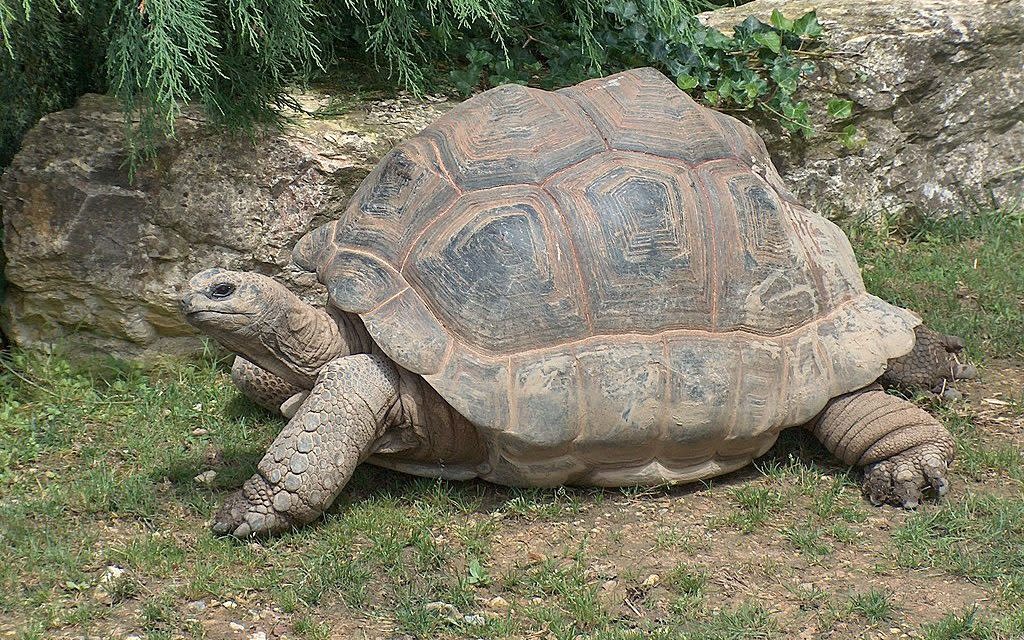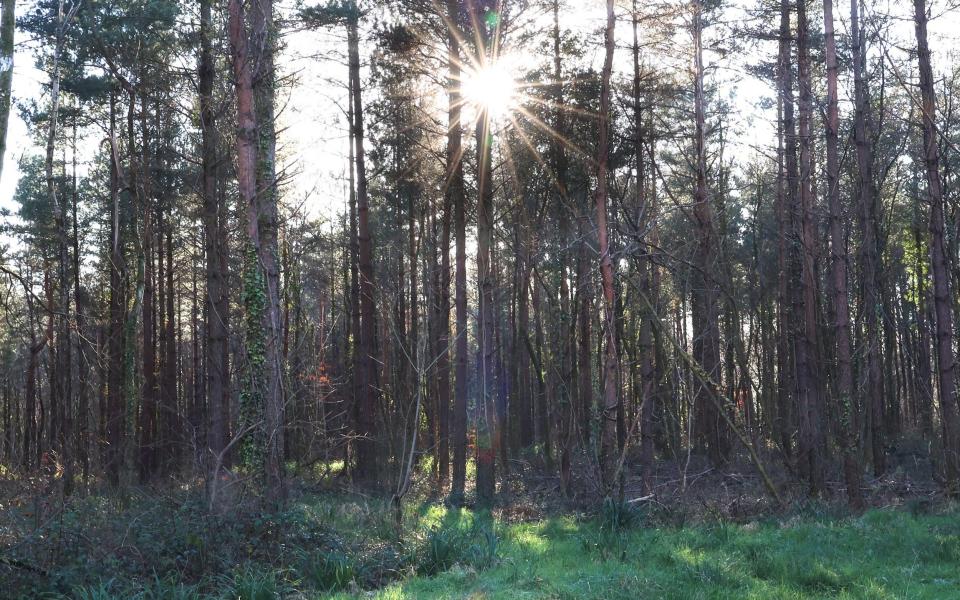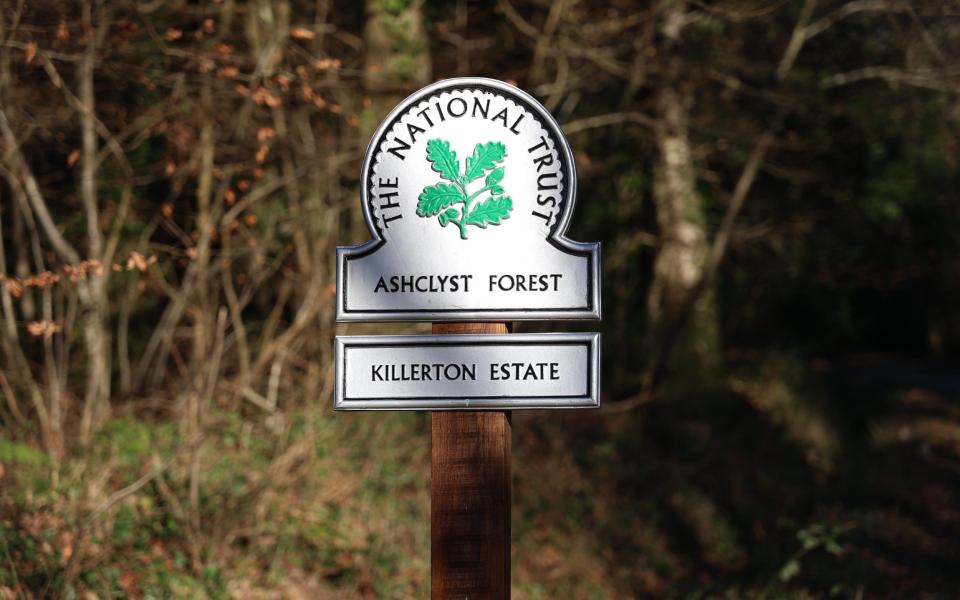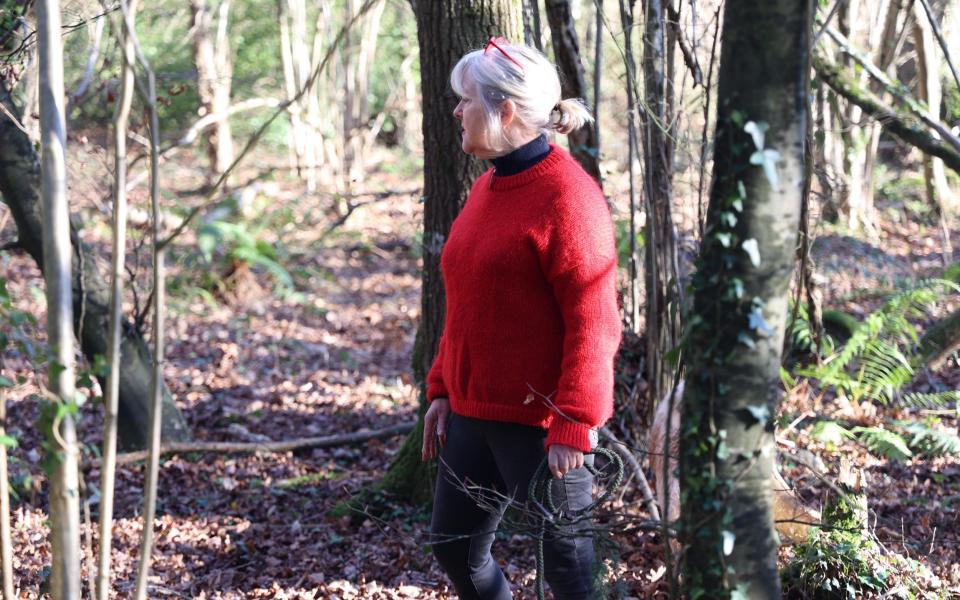What really happened to the seven dead tortoises found in a Devon forest?

Nestled in the heart of the Devonshire countryside, just a short drive from Exeter, Ashclyst Forest is an English idyll. Spanning 270 hectares of oak, hazel and ash, it forms part of the National Trust’s 18th-century Killerton Estate, and is popular with nature lovers and dog walkers alike.
Yet it has now become the talk of the town, after a grim and mysterious discovery. Last week, seven dead tortoises were spotted nestled among the leaves in two sites very close to each other. They were, it turned out, rare and vulnerable Aldabra giant tortoises, which hail from the island of Aldabra, an atoll that is part of the Seychelles and lies off Madagascar.
Devon and Cornwall Police, along with the RSPCA, have launched an investigation and appealed for any tortoise owners to come forward. Meanwhile, the UK’s community of reptile experts has a range of conflicting theories over what on earth might have happened.
The leading conjecture, it seems, is that these tortoises were the victims of the illegal wildlife trade. “My first thought was that it was smugglers,” says Imogen Hill, who runs The Tortoise Hut, a specialist shop in South Brent, Devon. “These tortoises are rare – and would have each been worth around £10,000, so that’s potentially £70,000 in total.
“It’s not easy getting a tortoise here from this part of Africa, but they could have done it.
“The smugglers could have brought them in, planning to sell them to pet shops or to individuals via websites.
“And maybe something went wrong and they died, so they had to dump them.”
It is a strong possibility. The 2020 World Wildlife Crime report showed wildlife crime to be a global and lucrative trade, with high demand driving prices. Between 1999 and 2018, some 6,000 different species of flora and fauna were seized – with nearly every country in the world involved. The report identified tortoises as among the most trafficked reptiles globally, with Aldabras having distinct appeal.
Known for their size and gentle nature, they are one of the largest species of tortoise in the world, reaching up to 4ft (120cm) and weighing up to 39st (250kg).
Aldabras live up to 150 years; in fact, the oldest living land animal – Jonathan, aged 191 – is an Aldabra tortoise, who lives on the remote island of St Helena. (He is due to meet Prince Edward later this month when the Duke of Edinburgh visits the island.) They are the only remaining species of tortoise from the Indian Ocean – with all the others having been hunted to extinction. Their island home is now a wildlife reserve, where around 100,000 of them graze on grasses, leaves and occasionally carrion or small invertebrates.

Several hundred are believed to exist in UK zoos and private collections – including five at Paignton Zoo, 30 miles from Ashclyst Forest, which took them in in the Eighties after they were imported illegally.
It is illegal to import a live wild-caught tortoise into the UK. Breeders can sell only captive animals bred from parental stock in their care. As such, only a handful of pet shops in the UK sell them – with babies born in the UK costing between £2,000 and £2,500.
Martyn Lewis, from the International Tortoise Association, in Sully, Cardiff, also believes they may have been destined for the illegal wildlife trade. “We think they were being trafficked in and died in transit,” he says. “You’re not allowed to bring them into this country, even legally. They can only be bred from captivity in the UK. The police have contacted us to see if there’s anyone on our database who owns Aldabras, but there is hardly anyone.”
At his sanctuary, Lewis regularly works with the RSPCA and Border Force dealing with illegal trafficking, and is aware of smuggling cases of reptiles.
In the UK, in 2015, British authorities confiscated 400 Horsefield tortoises – worth around £50,000 – along with other illegal wildlife items, such as scorpions, black bear claws and ivory products.
In 2021, customs officials in Ecuador discovered 185 baby tortoises packed inside a suitcase sent from the Galapagos Islands to the mainland, to be sold onwards in global trade. The animals had been wrapped in plastic, with each hatchling-sized juvenile worth £3,600.
But the theory that the reptiles in Devon were being smuggled as part of the international wildlife trade does have its detractors – not least because of the size of the animals involved.
These deceased tortoises – experts guess – were around 10 years old, and would have weighed roughly 30kg (4st 10lb) each. Their needs would have been very specific – with the animals requiring heat lamps and UV bulbs – making them difficult to transport.
This species does not hibernate in the winter, so would have needed to be kept at around 25-28C.
This problem leads some to believe these ill-fated tortoises were in the UK already, as part of a private collection.
Andy Highfield, of the conservation charity Tortoise Trust, said: “I believe these were long-term captive animals in the UK, and had unfortunately been kept badly prior to this outrageous incident.
“They all display signs of deformities due to dietary deficiencies and incorrect environment.
“From their physical characteristics, I would say that they were most likely imported as small juveniles before being kept for several years in poor conditions.
“Sadly, some people try to keep exotic species illegally as ‘trophies’ – though this is not particularly common.”
He suggests that an illegal owner may have ‘got in over their heads’. “They sell for a lot of money, but the overheads of keeping such a species in a cold climate such as the UK is astronomical,” he says. “Few people would get involved in this. But again, even if they were illegal and unwanted, the owner could very likely have found someone to buy them, so just dumping them like that is truly bizarre.”
There is, however, a more charitable theory floating around.
“The more I’ve thought about it, it could be that perhaps the person liked the tortoises and had a large collection, and then they had a power cut and the creatures died, although it would have taken a week or so,” says Imogen Hill.
“It’s not easy to dispose of a large tortoise body – you can’t put them in a bin – so someone may have left them in the forest.
“Maybe the person couldn’t afford the electricity bills anymore, as they would need a big heat and UV requirement. Or the cost of food, as these tortoises would have eaten a lot.
“You don’t have to have a licence to keep them – just to sell them – so they could have lived under the radar.
“But it’s still terrible. Tortoises can always be rehomed, even at our centre. And it’s horrible and tragic that these vulnerable creatures have died.”

Either way, it is a disturbing and relatively rare event. But it is not the only time an Aldabra tortoise has been found on National Trust-owned woodland in Devon. In December 2021, a creature was handed to Vale Vets Devon in Cullompton – just seven or so miles from the latest discovery – but it soon died.
Meanwhile, in May 2021, five South American Red-foot tortoises were found dead in an allotment in Barry, south Wales.
For Adrian Graham, 48, of Lincolnshire, keeping Aldabras is his passion. His collection of giants enjoy six acres of landscaped play areas, temperature-controlled barns and mud wallows. He also shows them off at country fairs, to raise a bit of income to help with their costs.
“They are quite lazy animals,” he says. “They stand up as tall as they can and stretch their necks out to have their heads scratched.
“They’ve been around for 200 million years so we’re a blip to them. For me, they’re a passion, and always will be. But they are bad as pets, as their requirements of temperature, humidity and diet are so hard to replicate.”
He too is baffled by the recent case.
“Personally, from the photos, I thought that the tortoises looked healthy – with good pattern growth on their shells and muscle to show they have walked about,” he says.
“They’re obviously worth thousands of pounds and there is surely some black international market trade for them as exotic pets. The bigger they get the more valuable they become. because they’ve already had a lot of the hard work put into rearing them, and size is their attraction.
“They only breed when they are 30 years old – and it’s very hard to breed them in captivity.
“Nothing happens quickly, and they are a huge commitment.”
He does, though, hope that the demise was down to a terrible accident rather than malicious intent. “Maybe it was a power cut,” he says. “It needn’t be malicious. It could be an unfortunate accident.”
Back in Devon, police have appealed for witnesses. Inspector Mark Arthurs said: “We are appealing to members of the public for information to try to establish the circumstances around this discovery and to identify those responsible.
“We would also like to hear from anyone who has recently purchased a giant tortoise in the area or knows of anyone who normally has a large number of tortoises but has fewer now.”
The trafficking of wildlife is increasingly recognised as both a specialised area of organised crime and a significant threat to many plant and animal species. Trafficking endangered species without a permit can result in a maximum seven-year prison sentence and unlimited fine.

The National Trust said it was “horrified” the animals were found in one of its woodlands.
Locals, meanwhile, have been left scratching their heads.
Livia Benato, of Exeter’s CityVets, said: “This story is so distressing. The animals are a protected species. The loss of these seven beautiful animals is a tragedy, not just individually, but also for the vulnerable conservation status of the species.”
Peter Labdon, a local resident who regularly visits the Killerton Estate, told the BBC: “It seems quite horrifying... considering the length of time that they can live, it’s a dreadful shame.”

Another resident, Susie Gould, said: “Whatever has happened to them, be it an accident or something criminal, it’s horrific.
“The police need to get to the bottom of it. And someone needs to be held accountable.”

 Yahoo News
Yahoo News 
